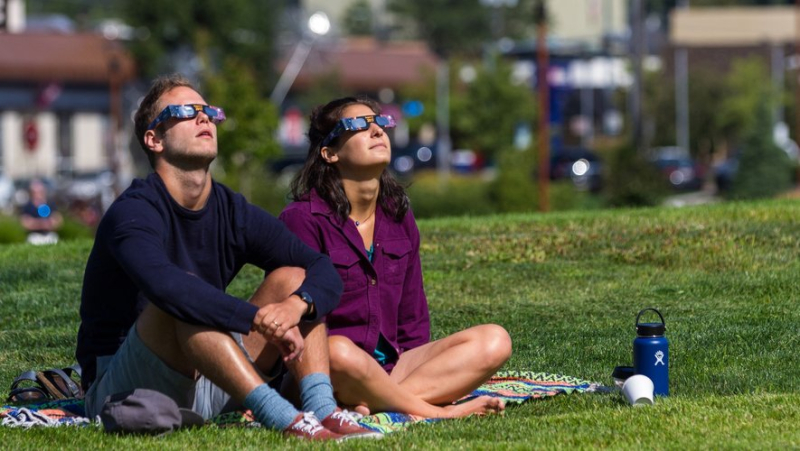Total solar eclipse this Monday: why it can cause irreparable vision loss ?

La meilleure façon d'observer une éclipse est d'utiliser des lunettes spéciales, qui bloquent 99,999 % de la lumière. Charles Wollertz/Getty Images
A simple glance at a solar eclipse, like the one that will be observed this Monday, April 8, 2024, in a large part of North America, can lead to irremediable vision loss, warn of eye health experts.
Tens of millions of people from Mexico to Canada, via the United States, will witness a rare celestial spectacle, which will not recur in this part of the world before 2044: the moon will completely obscure the light of the sun in places.
Human beings do not normally look at the sun because of the discomfort it causes, but during eclipses, some “overlook" this instinct, assures AFP Aaron Zimmerman, professor of optometry at Ohio State University.
The main danger linked to this phenomenon, he says, comes from "photochemical toxicity", when short and powerful waves of blue, violet and ultraviolet light, the latter invisible, trigger chemical reactions which damage the rods and cones of the retina, the membrane at the back of the eye receiving light impressions and transmitting them to the optic nerve.
This results in visits to emergency rooms from people complaining of blurred vision, changes in color perception and black spots, sometimes without any certainty as to a return to normal.
A major medical journal reports the case of a young woman who presented to an eye health establishment in New York after watching the eclipse of 2017 "several times for about six seconds without protective glasses" then with this equipment.
A few hours later, objects began to appear blurry and distorted, colors changed, and the patient reported a black spot in the center of her left eye. The damage observed at the cellular level still persisted six weeks later.
"Black spot"
According to the review, young adults could be more at risk because of larger pupils, a lighter eye structure or even "less good perception of the dangers" posed by contemplating an eclipse.
"In some cases, the damage is partial and can be treated so that it is no longer noticeable", explains to AFP Neil Bressler, professor of ophthalmology at Johns Hopkins University and editor-in-chief of JAMA Ophthalmology. Recovery normally takes a few months.
“But in other cases it can leave a permanent black spot and we don'have no treatment to reverse this' ;quot;, adds Mr. Bressler. The best way to view an eclipse is to use special glasses, which block 99.999% of the light.
To check that the equipment is of quality,"Locate the brightest bulb in your home and look at it closely. You should barely see the light", advises Professor Zimmerman.
If it's too late to get one, there are indirect methods, such as making a pinhole in cardboard and letting light shine on it. another surface or even use the simple colander in your kitchen in the same way. Broadcasting on the NASA website is another option.
Those lucky enough to be in the path of the total eclipse will be able to watch the event without glasses for a few seconds or minutes (depending on the geographical position) where the star will be completely obscured. It will thus be possible for them to admire the external atmosphere of the sun, its crown, shining behind the silhouette of the moon.
According to Professor Neil Bressler, the danger also lies in protecting yourself before and after this particular moment."It is absolutely necessary to know when the ;eclipse begins and put on his glasses first", he said.
Similarly, if it is possible to remove your glasses during the total eclipse phase, you must know how to put them back on at the right time, & ;quot;even if we are captivated by the spectacle".




